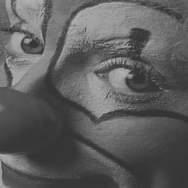The previous method based on the transfer function [Link] is powerful but you have to manually define the slope and the y-intercept of the transfer function. It is faster to directly modify the histogram.
Here is our test image...
 |
| Fig.1: Test image |
2. Playing with the histogram
 |
| Fig.2: Histogram of the image in Fig.1 |
2.1. Normalization of the histogram
In the histogram of Fig. 2, there is no pixel value in the range of [0-50] and of [178-255].It can be interesting to use all the pixel values available in a 8-bit image and thus to stretch the histogram between its extreme values (0 and 255) by interpolating all the values between 0 and 255. This operation is called the normalization of the histogram.
Go to
Process > Math > Macro... and type the following formula:min=50;max=178;v=(v-min)/(max-min)*255The resulting image appears brighter and more contrasted. Then, run again the histogram by typing
Ctrl + H. Et voilà! the minimum and maximum values are 0 and 255, respectively.Of course, it is implemented in ImageJ, go to
Process > Enhance Contrast... . In the dialog window, set the Saturated Pixels to 0.0% and check the Normalize checkbox. |
| Fig.3: Enhance Contrast Dialog Window |
Check your histogram to be sure that the normalization is correct.
2.2. Equalization of the histogram
An ideal transfer function based on the cumulative histogram[TODO]

No comments:
Post a Comment